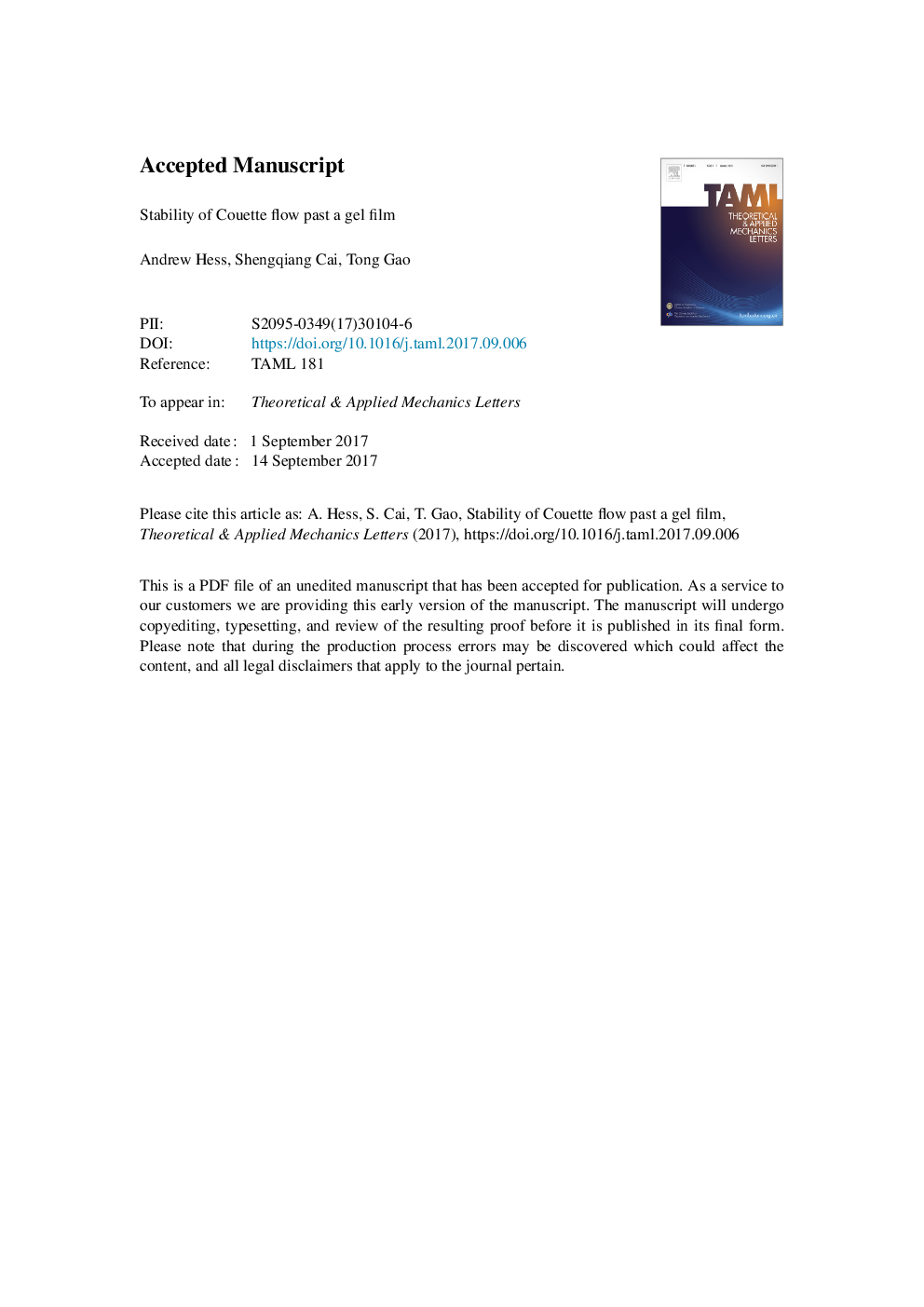| Article ID | Journal | Published Year | Pages | File Type |
|---|---|---|---|---|
| 7196509 | Theoretical and Applied Mechanics Letters | 2017 | 11 Pages |
Abstract
We study instability of a Newtonian Couette flow past a gel-like film in the limit of vanishing Reynolds number. Three models are explored including one hyperelastic (neo-Hookean) solid, and two viscoelastic (Kelvin-Voigt and Zener) solids. Instead of using the conventional Lagrangian description in the solid phase for solving the displacement field, we construct equivalent “differential” models in an Eulerian reference frame, and solve for the velocity, pressure, and stress in both fluid and solid phases simultaneously. We find the interfacial instability is driven by the first-normal stress difference in the base-state solution in both hyperelastic and viscoelastic models. For the neo-Hookean solid, when subjected to a shear flow, the interface exhibits a short-wave (finite-wavelength) instability when the film is thin (thick). In the Kelvin-Voigt and Zener solids where viscous effects are incorporated, instability growth is enhanced at small wavenumber but suppressed at large wavenumber, leading to a dominant finite-wavelength instability. In addition, adding surface tension effectively stabilizes the interface to sustain fluid shear.
Related Topics
Physical Sciences and Engineering
Engineering
Mechanical Engineering
Authors
Andrew Hess, Shengqiang Cai, Tong Gao,
